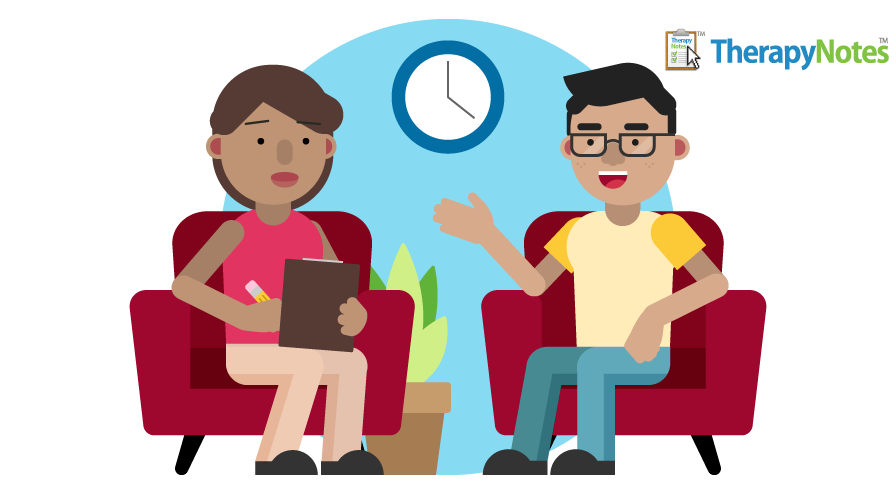A Quick Overview of CPT Codes
By TherapyNotes, LLC on July 4, 2018


Being a successful therapist requires communicating the procedures you’ve performed. This is not only important for your clients to know what’s going on, but also necessary when working with insurers, hospitals, and colleagues. To accomplish this, there’s a uniform process for reporting medical services called the CPT® coding system.
What are CPT codes?
CPT codes were developed in 1966 by the American Medical Association (AMA). These codes are used by a variety of medical professionals for:
- Reporting medical procedures and services under public and private health insurance programs
- Administrative management like claims processing and developing guidelines for medical care review
- Medical education and research
For information on specific CPT codes, read more of our posts, where we’ve written on codes such as 90785 and 96127.
Types of CPT codes
CPT codes are five characters long (numeric or alphanumeric) and fall into one of three categories:
Category I: Coders spend most of their time in category I, since it encompasses most procedures performed by healthcare providers in hospitals and medical offices. New codes in this category are released annually. Common category I codes for behavioral health are listed below.
Category II: These are supplemental tracking codes that either provide additional information to category I codes or describe services not included in category I, such as 2044F (Documentation of mental health assessment prior to intervention [back surgery or epidural steroid injection] or for back pain episode lasting longer than 6 weeks). Category II codes are typically used in addition to category I or III codes (though they can stand alone) and apply to many Medicaid codes. Category II codes are released three times a year in March, July, and November.
Category III: Category III are temporary codes for new and emerging services and procedures, such as 0508T (Pulse-echo ultrasound bone density measurement resulting in indicator of axial bone mineral density, tibia). This category allows for experimental codes that may eventually become category I or just don’t fit in with category I. Category III codes typically remain active for five years, and if at the end of that period they haven’t become category 1, the procedure must be marked with a category 1 “unspecified procedure” code. New category III codes are released biannually, in January and July.
Common Behavioral Health CPT codes
Here are some of the most common category I CPT codes therapists use:
- 90785 (interactive complexity add-on)
- 90791 (psychiatric diagnostic evaluation without medical services)
- 90792 (psychiatric diagnostic evaluation with medical services)
- 90834 (individual psychotherapy, 45 minutes)
- 90837 (individual psychotherapy, 60 minutes)
- 90839 (patient in crisis add-on, 60 minutes)
- 90847 (family psychotherapy with patient present)
- 90853 (group psychotherapy)
- 96151 (reassessment)
How are CPT codes developed?
Getting CPT codes added or revised can take 18–24 months to complete. Here's the process:
- Submit an application. To do this, you must be an individual Qualified Health Plan (QHP) , hospital, medical specialty society or other interested party. Applications require a lot of information and documentation, including a description of the procedure, a clinical vignette describing the typical patient, evidence of FDA approval, and more. To apply, visit AMA’s CPT® Code Applications page.
- AMA verifies eligibility. This includes making sure the request is a new issue or includes significant new information on a previously reviewed item.
- The CPT Advisory Committee evaluates the request. They have at least 3 months to evaluate and comment, request further information (if necessary), and send your application to the 17-member CPT Editorial Panel.
- The CPT Editorial Panel approves the code, notifying you of their decision shortly after.
- The code receives a value from the Relative Value Update Committee (RUC), who surveys relevant medical professionals about the procedure.
- AMA implements the code.
We'll write more on CPT codes in the coming months, so make sure you subscribe to our blog below to get notified of new posts.
Sources: CPT® Purpose & Mission, American Medical Association; CPT® Code Applications, American Medical Association; CPT® Category II Codes, American Medical Association; CPT® Category III Codes, American Medical Association; CPT® Codes: What Are They, Why Are They Necessary, And How Are They Developed?, US National Library of Medicine National Institutes of Health; CPT Primer for Psychiatrists, American Psychiatric Association; CPT Codes for Psychology Services, Psych Central
* The content of this post is intended to serve as general advice and information. It is not to be taken as legal advice and may not account for all rules and regulations in every jurisdiction. For legal advice, please contact an attorney.
Get more content like this, delivered right to your inbox. Subscribe to our newsletter.
More Content You'll Enjoy
The Best Practice Fusion Alternative for Mental Health

Supercharge your Documentation with TherapyFuel!

